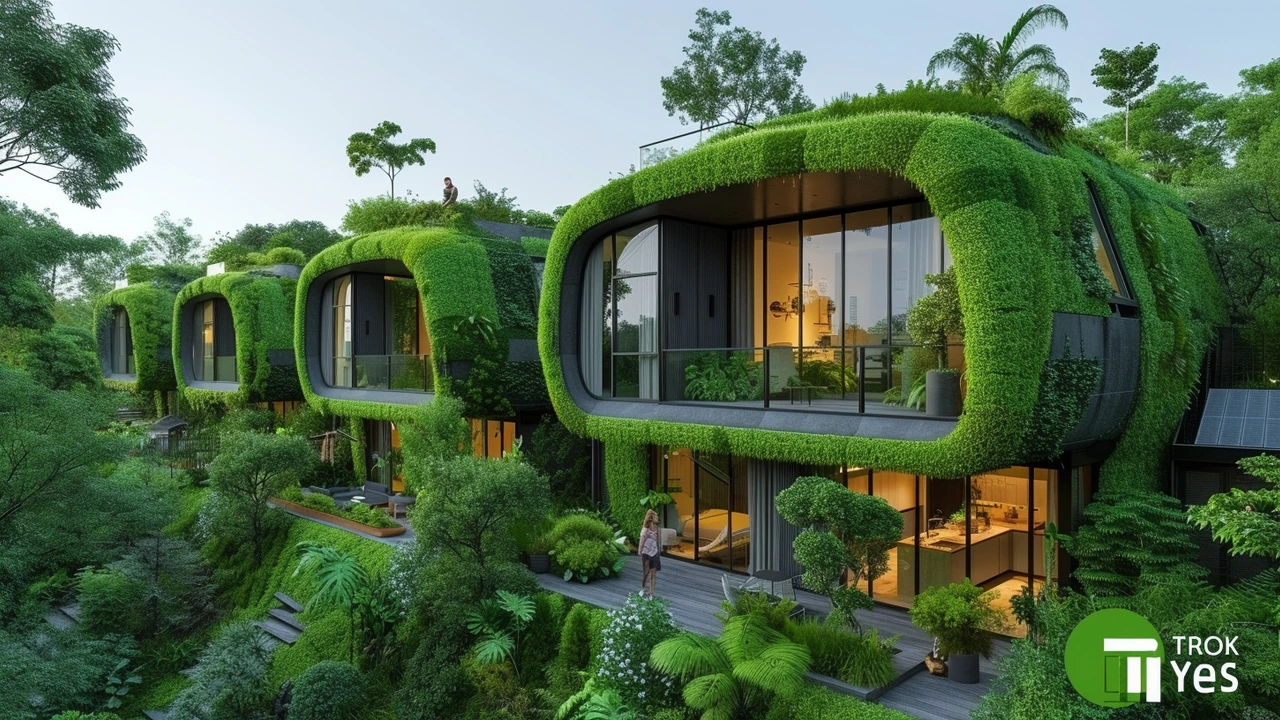Revolutionizing Our World: The Future of Sustainable Architecture and Innovative Design Trends
 Feb, 6 2024
Feb, 6 2024
Introduction to Sustainable Architecture: A Paradigm Shift
Sustainable architecture is no longer a buzzword or an idealistic pursuit; it's a necessity as we face the mounting challenges of climate change and environmental degradation. The concept revolves around minimizing the negative environmental impact of buildings by efficiency and moderation in the use of materials, energy, and development space. To me, living in Canberra, a city renowned for its green spaces and commitment to sustainability, the importance of this architectural revolution is both personal and professional. Sustainable architecture is not just about reducing the footprint of our buildings but also about creating spaces that enhance our wellbeing, connect us to our environment, and leave a legacy for future generations. It melds the practical with the visionary, incorporating elements designed to reduce resource consumption and promoting materials and technologies that are in harmony with our planet.
The Rise of Eco-Friendly Materials and Construction Practices
The core of sustainable architecture lies in the materials and construction practices used. Innovations in this area have led to the development of eco-friendly materials that are not only less taxing on the environment but also offer improved performance and durability. Recycled steel, bamboo, reclaimed wood, and precast concrete are just a few examples of materials making a positive impact. The construction process itself is evolving, with practices like prefabrication and modular construction gaining popularity due to their efficiency and reduced waste. Amongst these changes, there's a significant shift towards natural and locally sourced materials that minimize transport emissions and support local economies, further embedding sustainability into the fabric of the construction industry.
Energy Efficiency and Renewable Energy Integration
Another critical aspect of sustainable architecture is energy efficiency and the integration of renewable energy sources. Buildings are a major contributor to global energy consumption, making this area ripe for innovation. Advances in technology have seen the rise of passive solar design, green roofs, and smart glass, vastly improving a building's energy efficiency. Moreover, the incorporation of solar panels, wind turbines, and even geothermal systems into buildings is transforming them from energy consumers to producers. This decentralization of energy production not only reduces the strain on our power grids but also paves the way for a more resilient and sustainable energy ecosystem, a concept I find incredibly exciting.
Green Spaces and Biophilic Design
The integration of green spaces into urban architecture goes hand in hand with the principles of sustainable design. Biophilic design, which seeks to connect occupants more closely with nature, is gaining momentum, and for good reasons. Incorporating natural elements like living walls, indoor gardens, and water features not only improves air quality and contributes to the thermal comfort of buildings but also enhances psychological wellbeing. Cities around the world are starting to recognize the value of green spaces, not just in terms of aesthetic appeal but also in their ability to mitigate urban heat islands, support biodiversity, and improve public health. This movement towards greener, more liveable urban areas is something I witness and champion in my own community in Canberra, where the integration of nature into the urban landscape is celebrated.
Smart and Connected Buildings: The Role of Technology
Technology plays a pivotal role in the evolution of sustainable architecture, introducing smart solutions that enhance building efficiency and occupant comfort. Smart buildings, equipped with advanced sensors and IoT (Internet of Things) connectivity, are able to optimize energy use, monitor indoor air quality, and even regulate lighting and temperature based on occupancy, all in real-time. This intelligent approach to building management not only minimizes energy consumption but also tailors the living or working environment to the needs of its inhabitants, bridging the gap between sustainability and convenience. As someone deeply interested in the intersection of technology and sustainability, I find the potential of smart buildings truly inspiring, offering a glimpse into the future of sustainable living.
Challenges and Opportunities Ahead
Embracing sustainable architecture is not without its challenges. High upfront costs, regulatory hurdles, and a lack of awareness can be significant barriers to widespread adoption. However, the opportunities far outweigh these challenges. There is a growing awareness and demand from the public for sustainable living spaces, which, coupled with technological advancements and policy support, is driving the architectural industry towards more sustainable practices. The journey towards fully sustainable architecture might be long and fraught with hurdles, but the direction is clear. It's an exciting time to be part of this transformative movement, and I'm optimistic about the future of our built environment. As we continue to innovate and push the boundaries of what's possible, sustainable architecture will undoubtedly play a pivotal role in shaping a better, more sustainable world for all of us.